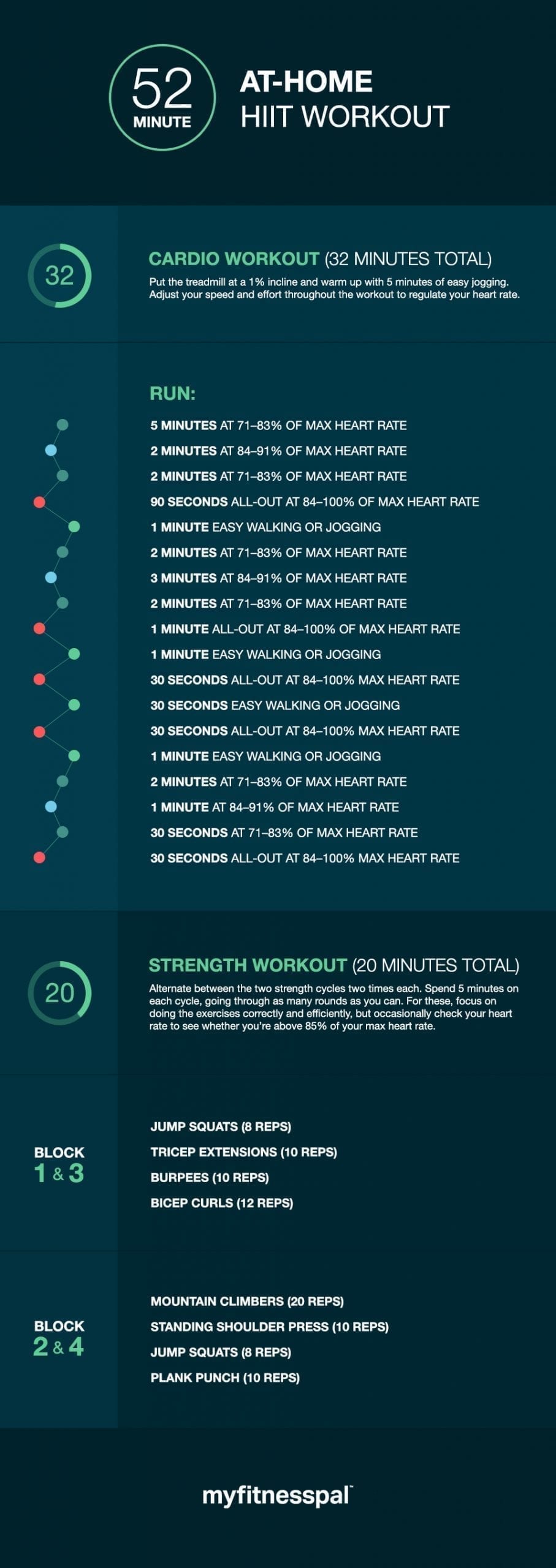
The Beginners Guide to Orangetheory Fitness
Finding a fitness routine that not only offers a great workout but also keeps you engaged for the long haul can be difficult. It is for these reasons that Orangetheory Fitness has risen in popularity in recent years. Orangetheory workouts rely on heart rate-based interval training that combines cardiovascular and strength work set to motivational music and led by energetic trainers. The result is an engaging 60-minute total-body workout that creates a big afterburn effect, allowing your body to continue torching calories long after you stop sweating.
When you walk into an Orangetheory class, you’ll be handed a heart rate monitor to help guide your workout. Each session includes a mix of high-intensity intervals completed on treadmills, rowing machines, TRX suspension trainers and free weights. While the workouts and the instructors change from one day to the next to keep things interesting, all sessions are structured to accommodate a variety of fitness levels.
If you’re interested in the nitty-gritty scientific details behind what drives the Orangetheory philosophy, keep reading.

High-intensity interval training underpins every Orangetheory session. This type of workout is all about pushing yourself to the max for short periods of time and then allowing for brief rest before ramping the intensity back up. In an Orangetheory class, this may mean running for a couple of minutes at a relatively easy “base pace,” a couple minutes at a somewhat uncomfortable “push pace” and then maybe a minute of all-out sprinting, followed by walking recovery.
HIIT has become so popular in recent years because it offers real results in terms of weight loss and fitness gains. A growing body of research has demonstrated that HIIT is not only effective in boosting fitness, but it’s also more time-efficient than your run-of-the-mill cardio session.
One study compared two groups over two weeks. One group completed six sessions of all-out 30-second sprints on stationary bikes with brief bouts of rest, and another performed six sessions of 90–120 minutes of moderate-intensity cycling. While both groups completed the same number of workouts, the sprint group did just 2.5 hours of training compared with 10.5 hours of training for the moderate-intensity group over the two-week study. Remarkably, despite the significant difference in the amount of time they trained, the groups showed the same increases in endurance capacity and overall fitness.
In another study, some of the same researchers showed that when it comes to those who are sedentary and overweight, even 10 minutes on a stationary bike with three all-out 20-second intervals can boost endurance capacity when performed three times a week for six weeks. They also saw improvements in things like blood pressure and other fitness markers.
Perhaps just as important, studies have also demonstrated that people tend to enjoy high-intensity interval training more than continuous moderate-intensity workouts. Since progress only comes through remaining committed to an exercise regimen over weeks and months, that counts for a lot.

One of the barriers to getting the most out of HIIT workouts is knowing whether you’re pushing hard enough during the high-intensity bouts, and whether you’re backing off enough during the recovery periods. Enter heart rate training. At Orangetheory, they use heart rate monitors to break down various paces and effort levels into hard data to help guide your workout.
For instance, during a treadmill workout in an Orangetheory class, “base pace” is 71–83% of your max heart rate, “push pace” is 84–91% of max heart rate and “all-out” sprinting is 84–100% of your max heart rate. Instead of trusting your perceived effort, you have cold, hard data to guide you through the workout. Those numbers are displayed on a big screen to help you keep track of things like calories burned, average heart rate and max heart rate. You are also sent a training report after the fact so you can monitor your progress over time.
All together, during an Orangetheory workout, you work through a five-zone interval training session called the “Orange 60.” During the hourlong session, they estimate that you’ll perform at 84% or higher of your max heart rate (zones 4 and 5), known as the “Orange Zone,” for 12–20 minutes. Remember, those high-intensity 12–20 minutes are dispersed throughout the 60-minute workout and include running, rowing and strength exercises.

You may be asking what the point of all of these fancy zones and numbers may be. Put simply, the idea behind Orangetheory is that if you can push into that “Orange Zone” for brief bouts during a 60-minute workout, you’ll enjoy a greater “afterburn” effect. They suggest that when done properly, their workouts can increase your metabolic rate for 24–36 hours after you stop sweating — totaling anywhere from 500–1,000 calories burned when all is said and done. Combined with good nutrition, they suggest that if you attend 3–5 classes per week, you have the potential of losing 3–5 pounds each week.
This is all based on some serious research on the subject of calorie afterburn, or “excess post-exercise oxygen consumption” as it’s known by experts. EPOC occurs when your rate of oxygen intake increases after a hard workout. In general, exercise physiologists estimate that about five calories are burned for every liter of oxygen consumed. To enjoy the greatest afterburn effect, research shows you have to push past 85% of max heart rate during workouts, aka the “Orange Zone.” Even when the energy cost of a high-intensity and low-intensity workout is identical, the former has been shown to offer a significantly higher EPOC than the latter.

While you may not have fancy flat-screen televisions, studio-quality speakers and a motivational instructor at your beck and call, there are ways to mimic Orangetheory workouts in the comfort of your own home. Owning a treadmill makes these types of workouts easier, but even if you don’t have the equipment, you could run laps around your neighborhood with a heart rate monitor before ducking into your house for the strength portion of the workout.
You will need a heart rate monitor and resistance bands or a couple free weights. Keep in mind that this isn’t an Orangetheory workout, but it employs many of the same principles related to HIIT, heart rate training and EPOC.






